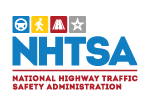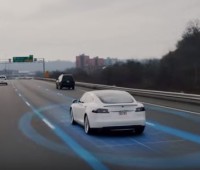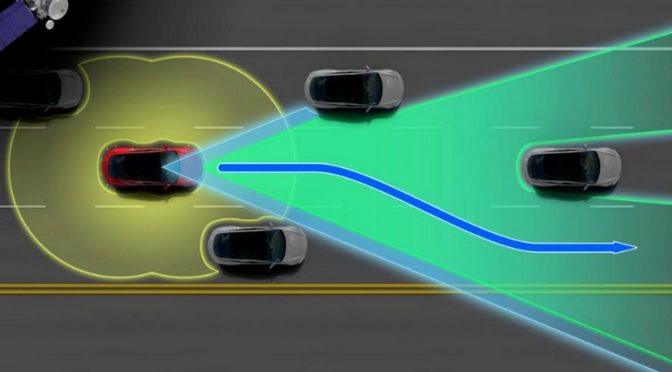In vielen Artikeln wird immer wieder ein Level für autonohmes Fahren referenziert. (Offiziell ist der Tesla Autopilot aktuell ein Level 2 System.) Was diese Level bedeuten, sind bei der NHTSA (National Highway Traffic Safety Administration) definiert:

NHTSA defines vehicle automation as having five levels:
Level 0
Alle heutigen Fahrzeuge mit deaktivierten Assistenz-Systemen:
No-Automation (Level 0): The driver is in complete and sole control of the primary vehicle controls – brake, steering, throttle, and motive power – at all times.
Level 1
Die meisten heutigen Fahrzeuge mit aktivierten ABS/ASR/ESP:
Function-specific Automation (Level 1): Automation at this level involves one or more specific control functions. Examples include electronic stability control or pre-charged brakes, where the vehicle automatically assists with braking to enable the driver to regain control of the vehicle or stop faster than possible by acting alone.
Level 2
Heutige Fahrzeuge mit Abstands-Regel-Tempomat, Stauassistent, Spurhalteassistent. Offiziell ist der Tesla Autopilot ein Level 2 System.
Combined Function Automation (Level 2): This level involves automation of at least two primary control functions designed to work in unison to relieve the driver of control of those functions. An example of combined functions enabling a Level 2 system is adaptive cruise control in combination with lane centering.
Level 3
Fahrzeuge dieser Klasse sind IMHO noch nicht auf öffentlichen Strassen aber existieren schon in Form des “Google Car” .
Limited Self-Driving Automation (Level 3): Vehicles at this level of automation enable the driver to cede full control of all safety-critical functions under certain traffic or environmental conditions and in those conditions to rely heavily on the vehicle to monitor for changes in those conditions requiring transition back to driver control. The driver is expected to be available for occasional control, but with sufficiently comfortable transition time. The Google car is an example of limited self-driving automation.
Level 4
Fahrzeuge die vollständig autonom fahren können werden schon 2021 erwartet. Neben den technischen Herausforderungen gibt es hier im Bereich der Gesetzgebung noch Neuland zu beackern.
Full Self-Driving Automation (Level 4): The vehicle is designed to perform all safety-critical driving functions and monitor roadway conditions for an entire trip. Such a design anticipates that the driver will provide destination or navigation input, but is not expected to be available for control at any time during the trip. This includes both occupied and unoccupied vehicles.

Im Jahre 2021 schon Level 4 Fahrzeuge auf den Strassen?
Ich bin fest davon überzeugt. Warum ich das so sehe steht hier, und hier.
Wenn man das Potential des neuen Autopiloten betrachtet, ist die Preiserhöhung schon wieder relativ. Siehe hier:
Nachtrag vom 20.10.2016
Ich habe schon gesagt, das autonomes fahren viel früher kommen wird, alle denken. Das es jedoch SO schnell gehen wird, hätte auch ich nicht gedacht:
“All Tesla Cars Being Produced Now Have Full Self-Driving Hardware”

